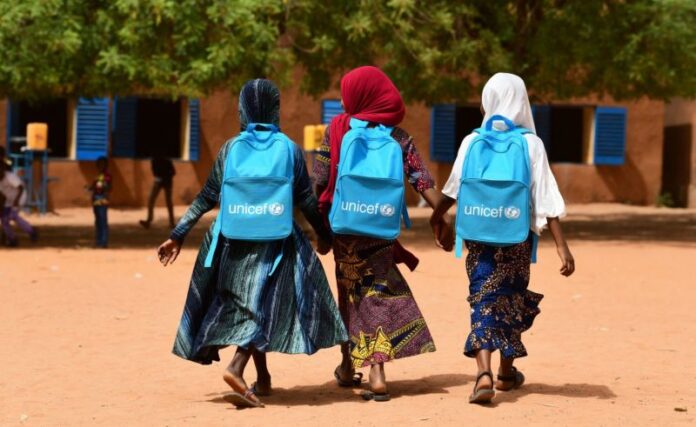18.3m children out of school in Nigeria – UNICEF
The United Nations International Children’s Emergency Fund (UNICEF) has distributed 2,760 solar-powered radio sets to the Katsina State Universal Basic Education Board (SUBEB) to aid students in security frontline communities.
However, the growing number of out-of-school children in Nigeria remains a significant concern.
During a Media Dialogue on Retention, Transition, and Completion (RTC) and Re-entry Guidelines for Adolescent Girls in the State, Rahama Farah, Chief of Field, UNICEF Field Office Kano, highlighted the dire situation of Nigeria’s education system.
Farah stated that one in three children in Nigeria is out of school, amounting to 10.2 million at the primary level and 8.1 million at the junior secondary level.
“Nigeria’s education system is faced with the twin crises of a large and growing out-of-school population and severe learning poverty,” Farah said.
“According to the Multiple Indicator Cluster Survey (MICS) 2021, three in four children aged 7-14 years cannot read with understanding or solve a simple mathematics problem.”
READ ALSO: Over 10 million Nigerian girls are out of school – UNICEF
UNICEF, alongside partners like the World Bank, the European Union, and the FCDO, has been collaborating with AGILE and BESDA projects to support Katsina State and other North-Western states in prioritizing educational investments to improve access, participation, and quality of learning outcomes.
“We are all here because our education system is in a crisis,” Farah continued, “characterized by a high number of out-of-school children, low attendance and participation rates, low transition rates, low completion rates, poor learning outcomes, and low skills acquisition.”
The crisis is exacerbated by high insecurity in the North-West, insufficient education financing, poorly resourced schools, low teacher competency levels, and high pupil-teacher ratios.
These factors contribute to low overall educational attainment, hamper social and economic opportunities for young people, and perpetuate cycles of poverty and inequality.
Farah also noted that the ongoing crisis affects global and regional development, as Nigeria accounts for the largest global (15%) and regional (33%) share of out-of-school children.
Education indicators are particularly low for adolescent girls in the North-East and North-West, especially those from poor families and rural or insecure areas.
“In 2021 alone, at least 25 schools were attacked, impacting 1,446 learners and 24 personnel.
Seventy-six percent of these attacks occurred in the Northwest. Kaduna was the most frequently attacked, followed by Katsina and Zamfara states,” Farah added.
In response to security threats, over 11,000 schools were closed for four months during the 2020/21 academic year, disrupting the education of 1.3 million children.
The out-of-school phenomenon is further driven by Nigeria’s growing child population, placing significant pressure on social services delivery, and insufficient education financing.
“Nigeria spends 1.2% of GDP on education, far lower than other African countries and below the international benchmark of four to six percent,” Farah said.
“This shortfall results in a deficit of 378,000 classrooms and 278,000 teachers, leading to high student-teacher ratios and additional pressure on underqualified teachers.”
Inadequate and unsafe school infrastructure, poor teaching quality, and low learning outcomes are compounded by insecurity and poverty, particularly affecting girls’ education.
Follow the Neptune Prime channel on WhatsApp: https://whatsapp.com/channel/0029Va74ZvU2v1IqKByXoX3d
Do you have breaking news, interview request, opinion, suggestion, or want your event covered? Email us at neptuneprime2233@gmail.com


